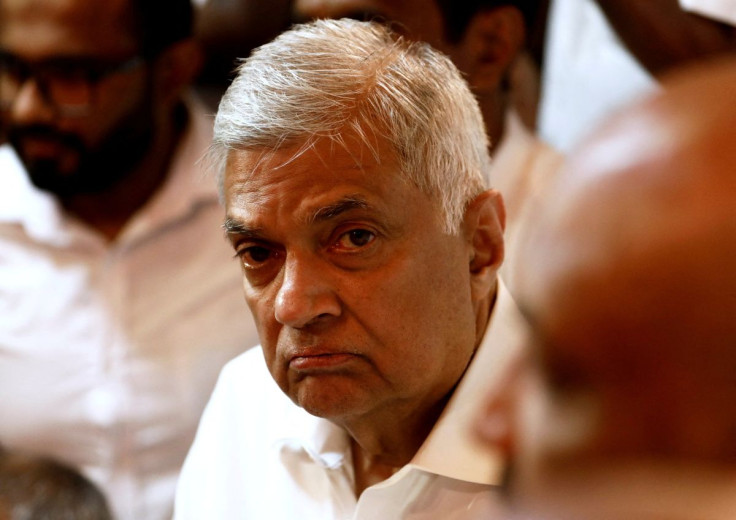Printing More Money Can Bring Sri Lankans To Their Knees

To pull Sri Lanka out of its unparalleled economic crisis, the new government -- less than a week into the job -- is printing more money.
The new Prime Minister, Ranil Wickremesinghe, has put forth solutions to bring stability back to the forex-crisis-hit Indian Ocean Island nation. They include selling the loss-making national carrier, printing more money, and raising taxes as well as energy and utility prices.
Wickremesinghe said in his national address that he was forced to print money to pay salaries to government staff and to obtain dollars in the open market to pay for three ships with crude oil and furnace oil anchored in the Indian Ocean.
Import-reliant Sri Lanka has no foreign reserves at its disposal to pay for petrol shipments, Kanchana Wijesekera, energy minister, told the Sri Lankan parliament, while appealing to people to stop queuing for fuel for the next two days.
The decision to print money would raise fiscal and external imbalances like higher inflation and currency depreciation in the 21.9 million country, which may force the Central Bank of Sri Lanka (CBSL) to opt for further rate hikes to arrest the monetary pressure.
The apex bank in the country is holding a meeting May 19 where it is expected to raise rates for a fourth consecutive time this year. In April, the bank had hiked its key lending rate by a historic 7 percentage points to 14.5 percent.
As the country is passing through its worst crisis since independence in 1948, the World Bank has forecast the economy to grow 2.4 percent this year from 3.5 percent in 2021. However, the international lending agency added that its outlook is highly uncertain as the situation is highly volatile in the crisis-hit nation.
Sri Lanka has been resorting to the strategy of cash surplus to bridge the deficit and keep tax rates low. In 2021, the Sri Lanka government, headed by Mahindra Rajakapse, who was forced to step down on May 10, printed 1.2 trillion rupees. In the first quarter of this year, his government has again printed 588 billion rupees. Sri Lanka's money supply rose by 42 percent between December 2019 and August 2021.
Already, inflation has hit 29.8 percent in the last month and food prices have gone through the roof by 46.6 percent year on year.
From January 2020 to March 2022, reserve money grew 49 percent, broad money 52 percent and the food price index went up by 51 percent.
Since the cash-strapped country was not in a position to mobilize funds through taxes and borrowing, the Rajapaksa regime always justified the move to print money extensively, a process it started in February 2020 after it had cut taxes in December 2019 ahead of the pandemic which that choked the tourism sector, the fifth-largest revenue source of the country.
Earlier, Sri Lanka was on a borrowing spree for years and funded infrastructure projects, many of which have turned white elephants now. Without finding internal resources or raising taxes, the populist Rajapaksa government went on currency printing to finance the deficit with the tacit support of the Sri Lankan Central Bank governors.
According to media reports, CBSL governors allowed printing presses to operate 24 hours and simply did not bother to look at the link between printing money and currency depreciation.
While currency printing may bring in short-term benefits and it appeals to the masses, it cannot increase economic output in the country, rather can only hike the amount of cash circulating in the system.
Under the new move by the new administration, government employees are going to be the prime beneficiaries of the printed money. But that will not prevent price hikes as the currency depreciates and inflation soars.
Sri Lanka made its first default on foreign debt as its grace period to make an interest payment to bondholders ended May 18.
Wickremesinghe has pledged a new relief budget to arrest Asia's fastest inflation rate. But the country will have to cope with a budget deficit of 13 percent of gross domestic product for the year ending December 2022, he warned.
Over the past four decades, Mexico (1982 and 1994), East Asia (1997), Russia (1998), Brazil (1999), Argentina (2002 and 2018), Zimbabwe (2017) Turkey (2018), Lebanon (2019) and Zambia (2020) faced economic crises mainly because of a loss of monetary sovereignty.
The day is not far off when Lankans will carry money in a bag to fetch a handful of things.





